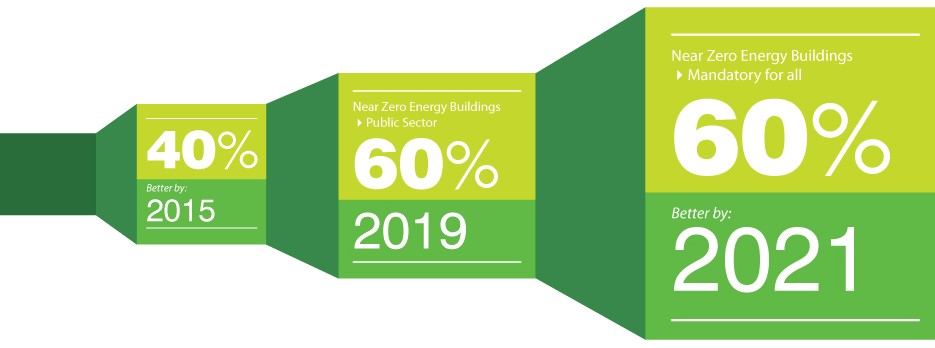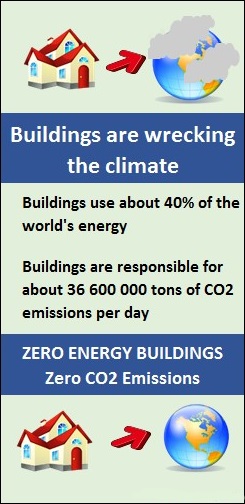Zero-energy Building
A zero energy building can also be referred to as a zero net energy building (NZE). It is a building with very low net energy consumption. This means that the total amount of energy in the building annually is roughly or initially similar to the amount of the renewable energy created generally. The building continuously contributes less overall greenhouse gases to the atmosphere compared to non-zero energy buildings. These buildings at times can consume the non-renewable energies and produce greenhouse gases but sometimes can reduce the energy consumed and greenhouse gases produced somewhere different by the same amount given out.
Definition
Design can be defined in different ways. It can be a drawing or a plan which is produced to show the function, working or look of buildings, garments or any other object before it is made or built. It can also be defined as a plan, purpose or intention which exists or is thought of to exist behind a specific fact, action or material object. Design can be further defined as the creation of a convention or a plan for construction purposes of an object, measurable human interactions or system.
Constructions can be defined as the clearing, excavating, dredging, grading of land and any other activity which is associated with building structures or other different types of properties.

Design and construction
The most reliable and cost effective step towards reducing high energy consumption in buildings occurs usually during the process of designing. In order to achieve this, zero energy departs significantly from the conventional construction process. Very successful zero energy building designers will typically combine a time-tested passive solar with an artificial air conditioning which works under the principles that usually work with on-site assets. Sunlight and solar heat energy cool air from the earth below and the prevailing winds may provide stable indoor temperatures with less mechanical means.
The most reliable and cost effective step towards reducing  high energy consumption in buildings occurs usually during the process of designing. In order to achieve this, zero energy departs significantly from the conventional construction process. Very successful zero energy building designers will typically combine a time-tested passive solar with an artificial air conditioning which works under the principles that usually work with on-site assets. Sunlight and solar heat energy cool air from the earth below and the prevailing winds may provide stable indoor temperatures with less mechanical means.
high energy consumption in buildings occurs usually during the process of designing. In order to achieve this, zero energy departs significantly from the conventional construction process. Very successful zero energy building designers will typically combine a time-tested passive solar with an artificial air conditioning which works under the principles that usually work with on-site assets. Sunlight and solar heat energy cool air from the earth below and the prevailing winds may provide stable indoor temperatures with less mechanical means.
Very complicated 3-D simulations of building tools are readily available to be modelled on how a building will work and perform with a set of design variables such as door type, window building orientations, insulation types, air tightness, efficiency of heating, cooling and values of the buildings elements. The simulations will help the designers to be able to predict how the buildings can perform before they are built. It will also enable them to ensure there is a model of the financial and economic implications on building a cost benefit analysis.
Zero energy buildings are usually built with very distinctive features. The cooling and heating tools are lowered slowly by using very sophisticated equipment. They add insulation, high-efficiency window panes, natural ventilations and many other unique techniques. Every feature will depend on different occurrences such as climate zone changes in which the construction occurs. Zero energy buildings are usually designed and constructed to make dual use of energies including white goods. For example, when using a refrigerator to exhaust or heat domestic water, ventilated air and sewer drain heat exchangers can be used to solve the issue.
Infrastructure Bill and Fixing the foundations
The government planned out an original scope for zero carbon homes in their consultation documents. The foundation for a greener future was set in 2006. Commitment in delivering zero carbon homes from 2017 was included in the budget in the year 2013. Written statements from July 20th, 2013 allowed the government to plan to amend part L of the regulations.
Generally it is important to consider living in buildings that have zero energy buildings because of their numerous advantages in many areas.
